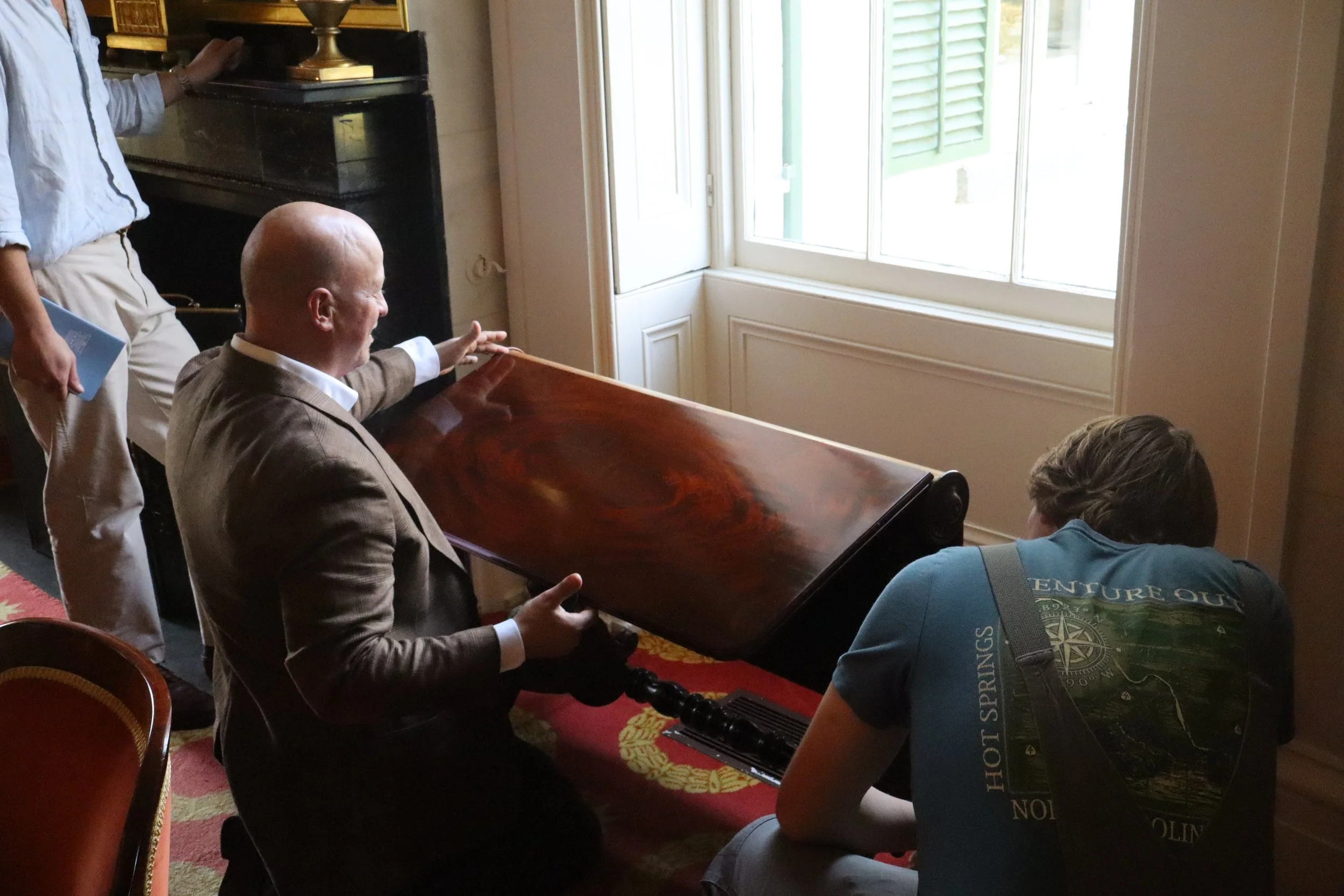Millford Student Day 2025 highlights stewardship through collaboration
Author: William Richards, Ph.D.
Millford was designed by Rhode Island architect and builder Nathanial F. Potter, and declared a National Historic Landmark in 1973.
Millford was the stage on November 8, 2025, for inspiring convening of preservationists, students, and professionals for the Jenrette Foundation’s annual Student Day, with a full slate of activities from hands-on workshops to engaging presentations.
The day offered a chance for students to showcase their work and an opportunity to engage with professionals redefining the practice of preservation in visionary ways, and followed last year’s successful Student Day, which focused on history and tradecraft.
“Sites like Millford come alive when people engage with them as students, as scholars, as carpenters, as masons, and as stewards,” said Benjamin Prosky, President of the Jenrette Foundation. “We come together to understand the skill and vision that stewardship requires—and to challenge the long-held idea that historic homes and landscapes are hands-off places.”
Students from the American College of the Building Arts (ACBA), Clemson University, and Tulane University embarked on an in-depth tour of Millford and its grounds guided by Joseph Beatty, Director of Operations for the Jenrette Foundation, highlighting the unique collection of Duncan Phyfe furniture within the home that Dick Jenrette and his partner Bill Thompson amassed. The tour offered a unique glimpse into the ongoing preservation efforts at Millford, the architectural challenges of maintaining such a property, and the latest conservation initiatives underway.
Jenrette Foundation intern and Clemson historic preservation graduate student Zenic Rice kicked off a special panel with a presentation on the systems research being conducted at Millford, focusing on sustainable water management and heating. ACBA students, working with Markus Damwerth, presented their process to recreate columns for Millford’s stable, the focus of ongoing restoration work at Millford led by Will Hamilton, Jenrette’s Director of Preservation. The stable, long a centerpiece of Millford’s history, had been a work site in the days before as ACBA students installed the new columns—save for one, which capped off the day.
Guyton Ash from Artis Construction led an in-depth discussion on the restoration of Millford’s porch, and Historic Charleston Foundation’s April Wood and Joyce Pope discussed revolving funds and preservation easements. Afternoon demonstrations by Drayton Hall archeologist Luke Pecoraro focused on ground-penetrating radar and by Colonial Williamsburg Foundation conservator Christopher Swan focused on furniture restoration techniques.
Built in 1839, Millford stands as one of the South’s most remarkable examples of Greek Revival architecture—a grand estate whose scale and ambition includes the main house, meticulously furnished with an extraordinary collection of pieces by renowned New York cabinetmaker Duncan Phyfe. From veneered chairs and tables to elegant bedsteads, each element was chosen to create a cohesive aesthetic, where every detail, from the tableware and portraits inside to the symmetry of the outbuildings beyond, reflected a unified vision of refinement.
Surrounding the house, the Mannings designed a carefully landscaped estate dotted with specialized structures: a kitchen, laundry, gardener’s house, two servants’ apartments, a Greek Revival porter’s lodge, a Gothic Revival spring house, and a striking stable designed in the form of a Greek temple. Together, these elements formed a self-contained world of artistry, craftsmanship, and architectural ambition that continues to captivate visitors today.
Defining it—and operating it—as a living laboratory means taking every opportunity to blend teaching with ongoing improvements. On the docket: the garage, whose upper floors now accommodate visiting students and whose lower floor is poised to undergo a transformation. Participants previewed some of the plans drawn up by ACBA’s Sacha Rosen and his students to reimagine the ground floor of Millford’s garage as a conference facility, highlighting the dialogue between preserving the structure’s integrity and embracing modern functions.
Dovetailing that dialogue, Eric Gradoia and Jeff Baker from MCWB Architects, spoke about the challenges of maintaining historic roofs, with a focus on high-profile projects such as Monticello and George Washington’s Mount Vernon. This year, they have been working to replace Edgewater’s roof, setting the house right for another 200 years. Their expertise in maintaining these national treasures resonated with attendees, reinforcing the day’s message about the complexities and rewards of historic preservation.
“What we do here at Millford—or at Edgewater or Ayr Mount, for that matter—is we cherish the architecture not by casting it in amber, but by fostering learning laboratories,” said Prosky. “We enjoy tremendous collaborations with schools, institutions, and practitioners whose growth is based on learning from our historic and cultural infrastructure.”















